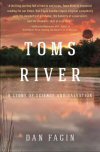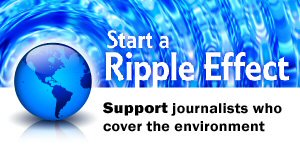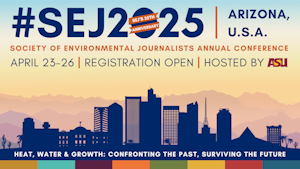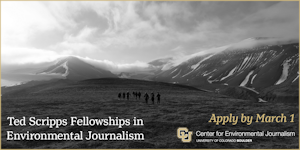SEJournal Online is the digital news magazine of the Society of Environmental Journalists. Learn more about SEJournal Online, including submission, subscription and advertising information.

Book Shelf
Toms River: A Story of Science and Salvation
By Dan Fagin
Random House, $28
Reviewed by TOM HENRY
Dan Fagin’s book, “Toms River: A Story of Science and Salvation,” is a wake-up call for all journalists and would-be journalists who believe the environmental movement began with the first Earth Day in 1970.
It’s true the modern environmental movement as we know it today had its origins in that massive event that occurred 43 years ago, one of this nation’s largest ever with an estimated 20 million participants.
But Fagin goes Old School on us. The former SEJ president, now director of the Science, Health and Environmental Reporting program at New York University, puts the environmental movement in a much richer, broader and deeper historical context.
His story begins well before 1969, when there was a massive oil spill off the coast of Santa Barbara, Calif., and when a Cleveland-area tributary of Lake Erie, the Cuyahoga River, had its most high-profile fire. It predates Rachel Carson and her landmark 1962 book, “Silent Spring,” by centuries. Same for the impact that Teddy Roosevelt and John Muir had on early conservation and America’s national park system.
Fagin rears back to the days of Paracelsus, a brilliant-yet-arrogant German-Swiss scientist from the 1500s known as “the father of toxicology.”
Largely misunderstood and greatly under-appreciated, Paracelsus helped medicine itself evolve by focusing on the potential impact of poisons to the human body. Paracelsus argued that many things in nature have the capacity to kill us, so we should learn to manage them better. “The dose makes the poison” is the English translation and summation of his most famous quote.
That was a radical concept back then. Yet, as Fagin notes, the work of Paracelsus and his followers, especially an Italian physician named Bernadino Ramazzini, meant that disease “could no longer be explained away as the uncontrollable consequence of capricious deities, jealous mountain gnomes, or humoral imbalances.”
Likewise, that developing branch of science raised — or should raise — questions about modern parallels, such as when bureaucrats try to explain away cancer clusters as bad luck or as a rare combination of people with bad genes.
Fagin’s book is a highly ambitious one. His historical framework sets the stage for a much larger discussion about how a once-idyllic New Jersey seaside community had the makings of being known more for its Norman Rockwell-esque lifestyle, only to become a poster child for corporate greed, corruption and horrific waste management.
The Toms River area eventually became the site of one of the largest legal settlements in the history of toxic dumping, a symbol of carelessness and industrial pollution.
One theme that emerges is that nobody had to be blindsided to the degree they were — and that this situation is hardly unique.
The book is unsentimental, but full of passion and, above all, exhaustively researched.
Fagin, one-time environmental writer at Newsday, has a strong background in reporting on cancer clusters and the effects of chemical exposure. At several junctures, his prose can be a little too heavy-handed and arcane, with long, confusing names of chemicals bantered about as if they were part of our common dialogue. To some degree, that’s one of the inherent risks of getting knee-deep in the world of toxicology and epidemiology. It’s arcane. It’s messy. It’s filled with scientific gobbledygook that the layman struggles with, no matter how it’s sliced and diced.
These are minor issues, though. At its core, “Toms River: A Story of Science and Salvation” delivers the goods like few other books of its kind.
This is difficult subject matter, but Fagin connects the dots from the days of Paracelsus to the era of midnight haulers and careless dumping to modern times. He takes you inside the lives of many victims, gets you to understand the politics of sluggish, even indifferent bureaucrats, and draws parallels to other major investigations into groundwater contamination, such as the one in Woburn, Mass., which became the focus of the book and movie called “A Civil Action.”
This is a hard-hitting, gutsy book that goes well beyond the obvious. It takes readers behind the scenes and into the minds of those fiercely determined not to let their town’s pollution pass unnoticed, while tackling some cumbersome and often-confusing science. It is a comprehensive, impressive look back at what should never have happened, but also a clarion call for the future as pressure mounts to roll back enforcement of water and air pollution laws.
Tom Henry writes for The (Toledo) Blade. He is a member of SEJ’s board of directors, SEJournal’s editorial board and is SEJournal’s book editor.
* From the quarterly newsletter SEJournal, Spring 2013. Each new issue of SEJournal is available to members and subscribers only; find subscription information here or learn how to join SEJ. Past issues are archived for the public here.













 Advertisement
Advertisement 



